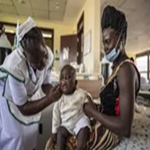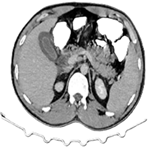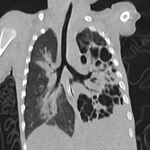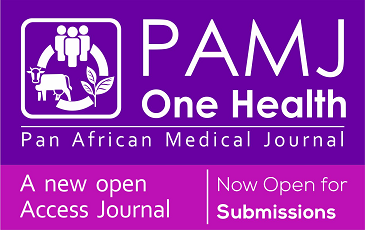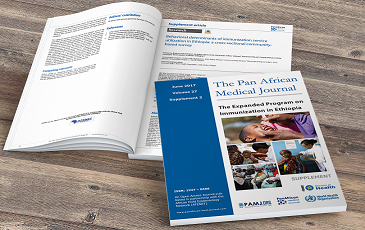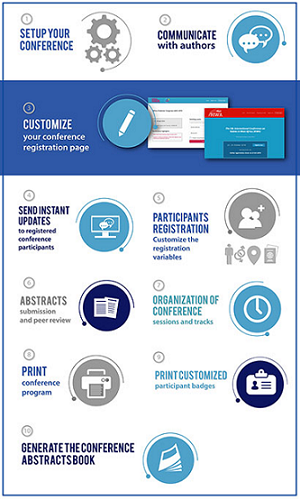Prise en charge chirurgicale à ciel ouvert de l’instabilité luno-triquétrale
Badr Ennaciri, Emmanuel Beaudouin
Corresponding author: Badr Ennaciri, Department of Orthopaedics, Avicenna University Hospital, Rabat, Morocco 
Received: 05 Sep 2015 - Accepted: 04 Nov 2015 - Published: 27 Jul 2016
Domain: Clinical medicine
Keywords: Ligament triangulaire, instabilité luno-triquétrale, extenseur ulnaire du carpe
©Badr Ennaciri et al. Pan African Medical Journal (ISSN: 1937-8688). This is an Open Access article distributed under the terms of the Creative Commons Attribution International 4.0 License (https://creativecommons.org/licenses/by/4.0/), which permits unrestricted use, distribution, and reproduction in any medium, provided the original work is properly cited.
Cite this article: Badr Ennaciri et al. Prise en charge chirurgicale à ciel ouvert de l’instabilité luno-triquétrale. Pan African Medical Journal. 2016;24:273. [doi: 10.11604/pamj.2016.24.273.7898]
Available online at: https://www.panafrican-med-journal.com//content/article/24/273/full
Prise en charge chirurgicale à ciel ouvert de l’instabilité luno-triquétrale
Open surgery for lunotriquetral instability
Badr Ennaciri1,&, Emmanuel Beaudouin2
1Department of Orthopaedics, Avicenna University Hospital, Rabat, Morocco, 2Department of Orthopaedics, Chambéry Hospital, Chambéry, France
&Auteur correspondant
Badr Ennaciri, Department of Orthopaedics, Avicenna University Hospital, Rabat, Morocco
Lunotriquetral dissociation is associated with triangular complex lesions; diagnosis is clinically suggested by pain accentuated by the ulnar deviation and confirmed by arthrography or MRI. Treatment is based on arthroscopic suturing techniques or ligamentoplastic procedures for irreparable damages. Ligamentoplasty using the extensor carpi ulnaris transplant is a simple and attractive technique for the treatment of these instabilities. We report the case of a 40-year old left handed, banking professional. He was victim of a traffic accident causing shoulder and left wrist trauma. Lesions assessment showed shoulder fracture-dislocation treated orthopaedically , associated with a sprained left wrist. Patient underwent an MRI of the wrist that showed triangular ligament lesion. After a dorso-ulnar approach, centered over the radio-ulnar distal joint , and exposure of the lunotriquetral line space, the rupture was confirmed; then, the patient underwent intra-carpien avivement and installation of two Mitek® mini implants; the 3rd operative time consisted of a sample of transplant tendon transfer at the expense of the ulnar extensor carpi left pedicle distally; and finally, the tendon was attached to the lunate and triquetrum bones. Three lunotriquetral pins were fixed to protect ligamentoplasty and removed two months later. Clinical and radiological outcomes were good at six months.
Key words: Triangular ligament, lunotriquetral instability, extensor carpi ulnaris
La dissociation luno-triquétrale fait partie des lésions du complexe triangulaire ; le diagnostic est évoqué cliniquement par des douleurs accentuées par l’inclinaison ulnaire et confirmé par l’arthroscanner ou l’IRM. Le traitement fait appel aux sutures arthroscopiques ou aux procédés de ligamentoplastie pour les lésions irréparables. La ligamentoplastie utilisant le transplant de l’extenseur ulnaire du carpe est une technique simple et séduisante pour le traitement de ces instabilités. Les auteurs rapportent l’observation d’un patient âgé de 40 ans, gaucher et banquier. Victime d’un accident de circulation occasionnant traumatismes de l’épaule et du poignet gauche. Le bilan lésionnel avait montré une fracture-luxation de l’épaule traitée orthopédiquement, associée à une entorse du poignet gauche.Une IRM du poignet a été demandée et qui a montré une lésion du ligament triangulaire (A). Après abord dorso-ulnaire, centré sur la radio ulnaire distale, et exposition de l’interligne luno-triquétrale, la rupture a été confirmée (B); ensuite, nous avons procédé à un avivement intra-carpien et mise en place de deux implants mini Mitek® (B); le 3ème temps opératoire a consisté en un prélèvement du transplant tendineux au dépens de l'extenseur ulnaire du carpe laissé pédiculé en distal (B); et enfin, le tendon a été fixé sur le lunatum et le triquétrum (B). Trois broches luno-triquétrales pour protéger la ligamentoplastie ont été mises en place (C), puis enlevées deux mois plus tard. L’évolution clinico-radiologique a été très bonne après six mois.
Figure 1: A) MRI of the wirst showing TFCC lesion; B) operative technique of lunotriquetral instability repair; C) three lunotriquetral K wires protecting the ligamentoplasty




